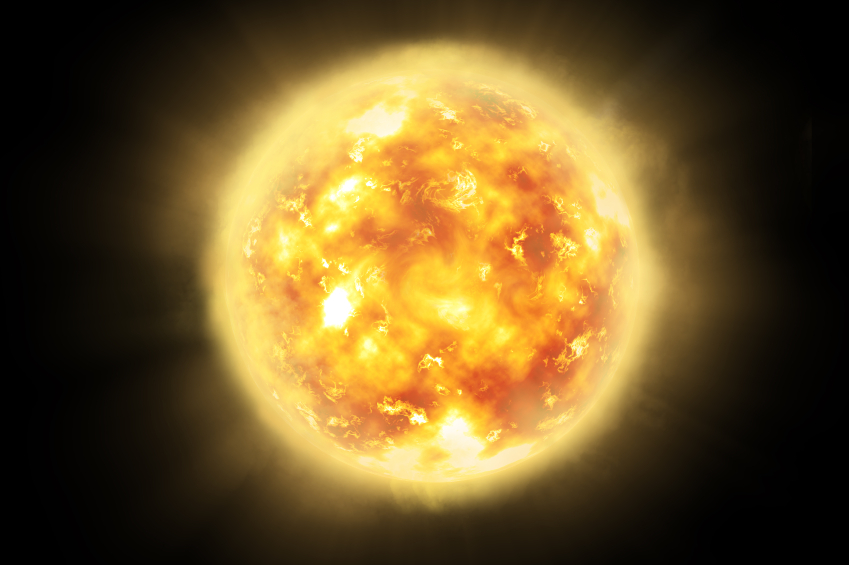Daytime fireball meteor generates sonic boom over UK and France
03/27/2021 / By Virgilio Marin

A rare daytime fireball rippled across the sky above the United Kingdom and France on Saturday, March 20. At 2:50 p.m., the fast-moving rock produced a loud sonic boom that was reportedly heard from southwest England to Wales all the way to northern France.
Most people initially thought that the noise came from a fighter jet, but the U.K.’s Ministry of Defence disputed this. Meanwhile, a number of people online said that they had seen a bright flash of light across the sky, which satellite images later confirmed to be a fireball.
Richard Kacerek of the U.K. Meteor Observation Network, a community of amateur astronomers, said that the meteor belonged to a class of meteors called “bolides,” which are the largest and brightest type of fireballs. He added that last Saturday’s meteor must have been “very large” to be visible during the day.
Fireball hunters asked people in southwest England to be on the lookout for any meteorite, though some experts suggested that the fireball might have landed in the sea in the Bristol Channel.
What are fireballs and why are they so bright?
According to the American Meteor Society (AMS), a fireball is an extremely bright meteor that radiates light equal to or greater than that of Venus in the night sky. It burns so brightly because of its size and speed. As a fireball enters Earth’s atmosphere, it slows down due to friction and heats up, releasing energy in the form of visible light.
The biggest and brightest fireballs, such as last Saturday’s bolide, can be seen during the day. They also often create a sonic boom before breaking apart because they enter the atmosphere traveling faster than the speed of sound, which is about 761 miles per hour (mph).
While thousands of meteors of fireball magnitude hit the Earth everyday, daytime fireballs are rare. According to AMS, a fireball that’s brighter than Venus usually appears once every 200 hours of meteor observing. Meanwhile, dimmer fireballs often make their way to the planet every 20 hours or so.
Most fireballs go unnoticed because they are not bright enough to be seen during the daytime. Additionally, they occur over the ocean and other uninhabited areas during the night.
Large meteors cause disastrous meteorite impacts
On Friday, March 19, a fireball reportedly exploded over Cuba in the middle of the night. Cuban authorities said that satellites registered the flash as a possible bolt of lightning but the sky was clear at the time. Scientists later said that a small space rock likely broke apart as it hit the atmosphere, causing the bright explosion.
Last February, a large nighttime fireball brightened the sky over the U.K. It was seen as far as the Netherlands and was reported to have generated a sonic boom. Experts estimate that the meteor was traveling at around 30,000 mph when it entered the atmosphere. (Related: Rare fireball illuminates the night sky in China.)
Sonic booms usually indicate that a meteor was large enough to survive the extreme trek through the sky and land on the planet as a meteorite. After the February fireball, for instance, a family in southwest England found a meteorite on their driveway.
“Normally when you hear that, it’s a good sign that you have got rocks that have made it to the surface,” said Ashley King from the UK Fireball Alliance (UKFall), a group of experts on the hunt for meteorites.
“It’s incredibly exciting and I’m a bit stunned,” King added, referring to last Saturday’s meteor.
Learn more about past meteorite impacts and how they affected life on Earth at Space.news
Sources include:
Tagged Under: asteroids, astronomy, bolides, cosmic, disaster, Earth, fireball, meteorite impact, meteorites, meteors, natural disasters, outer space, sonic boom, Space, space weather, weather
RECENT NEWS & ARTICLES
Physics.News is a fact-based public education website published by Physics News Features, LLC.
All content copyright © 2018 by Physics News Features, LLC.
Contact Us with Tips or Corrections
All trademarks, registered trademarks and servicemarks mentioned on this site are the property of their respective owners.





















